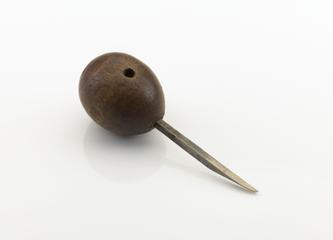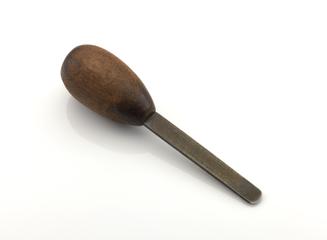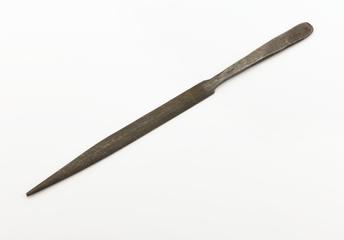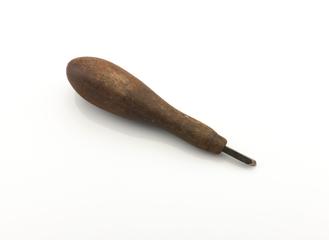




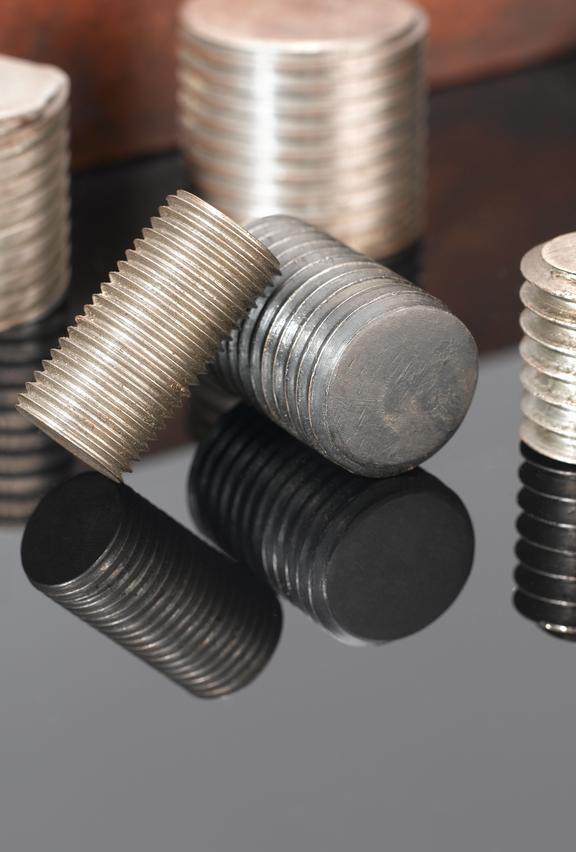

Box of specimen threads made in connection with screw-rolling machine by Young of Glasgow in Scotland, 1855-1860.
These threads were manufactured on a machine, patented in 1851 and received by the museum in 1860, intended for making single or multiple screw threads of different diameters from the same set of dies, and produces the thread, whether square or angular, by rolling compression.
Two steel plates or dies, having on their faces longitudinal grooves of the size and shape of the required screw thread, are placed on above the other at a distance apart suitable for the diameter of the screw. The upper die is attached to a block which can be raised or lowered by a screw, and the lower one is attached to another block which slides in horizontal guides and receives a reciprocating motion from a crank and connecting rod driven through spur gearing. The dies are adjustable in their blocks and are set so that their grooves are inclined at opposite angles to the direction of motion of the lower die, equal to the angle of the required thread. The rod or blank is placed between the dies, the upper one forced down upon it, and motion given to the lower one whereby the blank is rolled between the faces.

